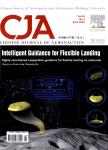版权所有:内蒙古大学图书馆 技术提供:维普资讯• 智图
内蒙古自治区呼和浩特市赛罕区大学西街235号 邮编: 010021

作者机构:Institute for Aero Engine Tsinghua University Beijing100084 China School of Energy and Power Engineering Beihang University Beijing100191 China
出 版 物:《Chinese Journal of Aeronautics》 (Chin J Aeronaut)
年 卷 期:2025年第38卷第3期
核心收录:
基 金:This work was supported by \u201CShuimu Tsinghua Scholar\u201D Project China (No. 2024SM223) and the National Science and Technology Major Project China (No. Y2022-V-0002-0028)
主 题:Hardware in the loop simulation
摘 要:Aeropropulsion System Test Facility (ASTF) is required to accurately control the pressure and temperature of the airflow to test the performance of the aero-engine. However, the control accuracy of ASTF is significantly affected by the flow disturbance caused by aero-engine acceleration and deceleration. This would reduce the credibility of ASTF s test results for the aero-engine. Therefore, first, this paper proposes a feedforward compensation-based L1 adaptive control method for ASTF to address this problem. The baseline controller is first designed based on ideal uncoupled closed-loop dynamics to achieve dynamic decoupling. Then, L1 adaptive control is adopted to deal with various uncertainties and ensure good control performance. To further enhance the anti-disturbance performance, a feedforward strategy based on disturbance prediction is designed in the L1 adaptive control framework to compensate for the unmatched flow disturbance, which cannot be measured directly. In addition, this strategy takes into account the effects of actuator dynamics. With this method, the feedforward term can be determined from the nominal model parameters despite uncertainties. Finally, to demonstrate the effectiveness of the proposed method, various comparative experiments are performed on a hardware-in-the-loop system of ASTF. The experimental results show that the proposed method possesses excellent tracking performance, anti-disturbance performance and robustness. © 2024 The Author(s)